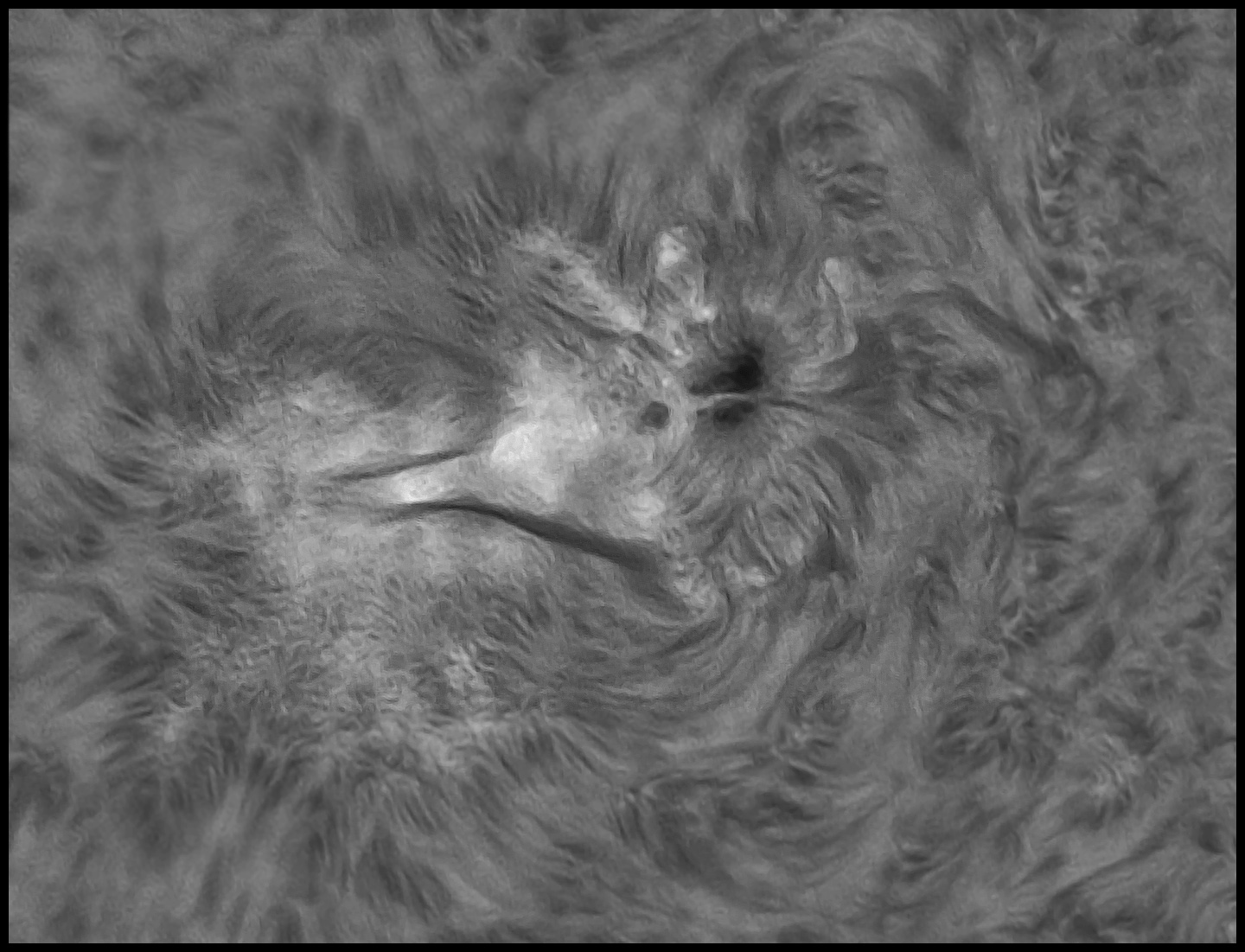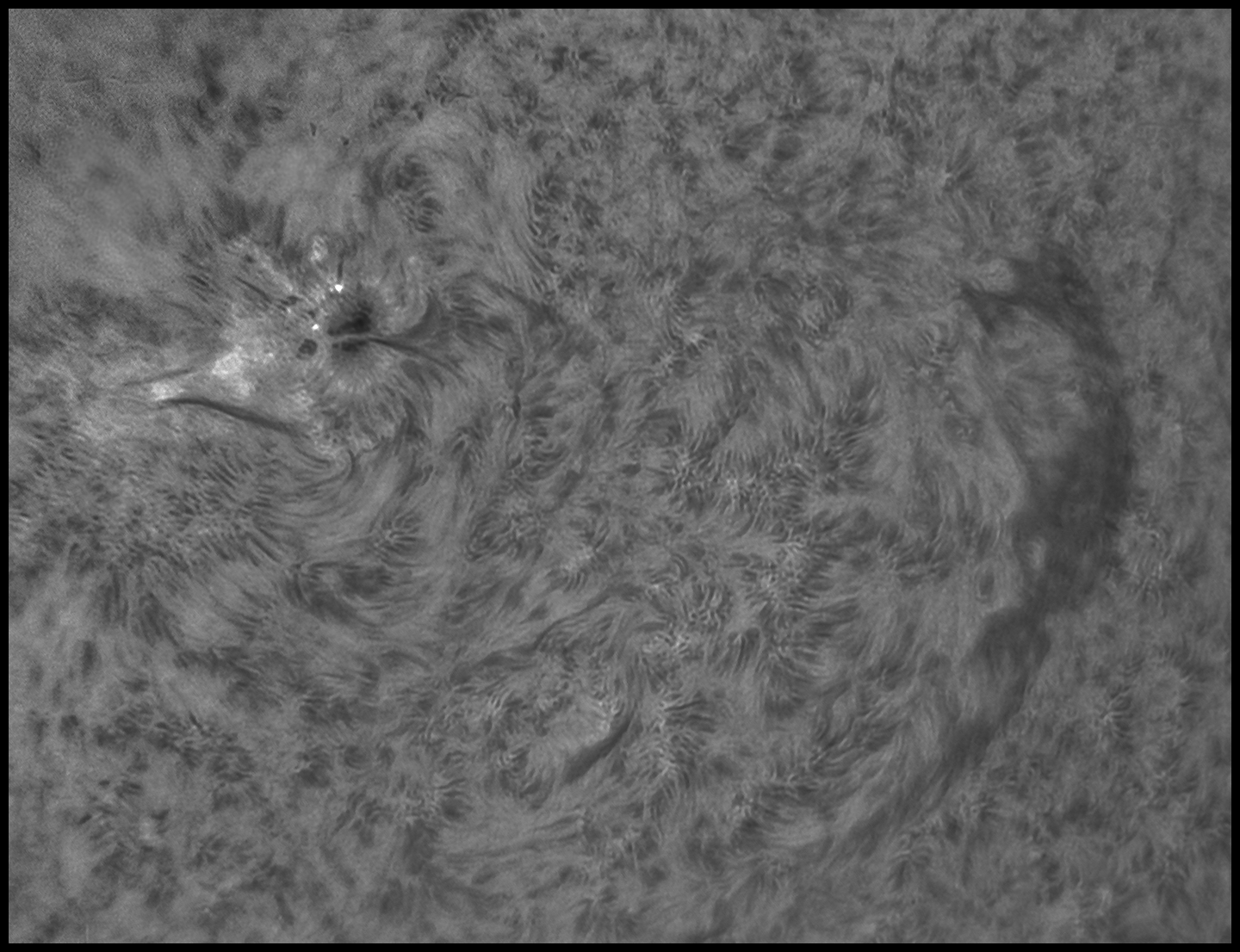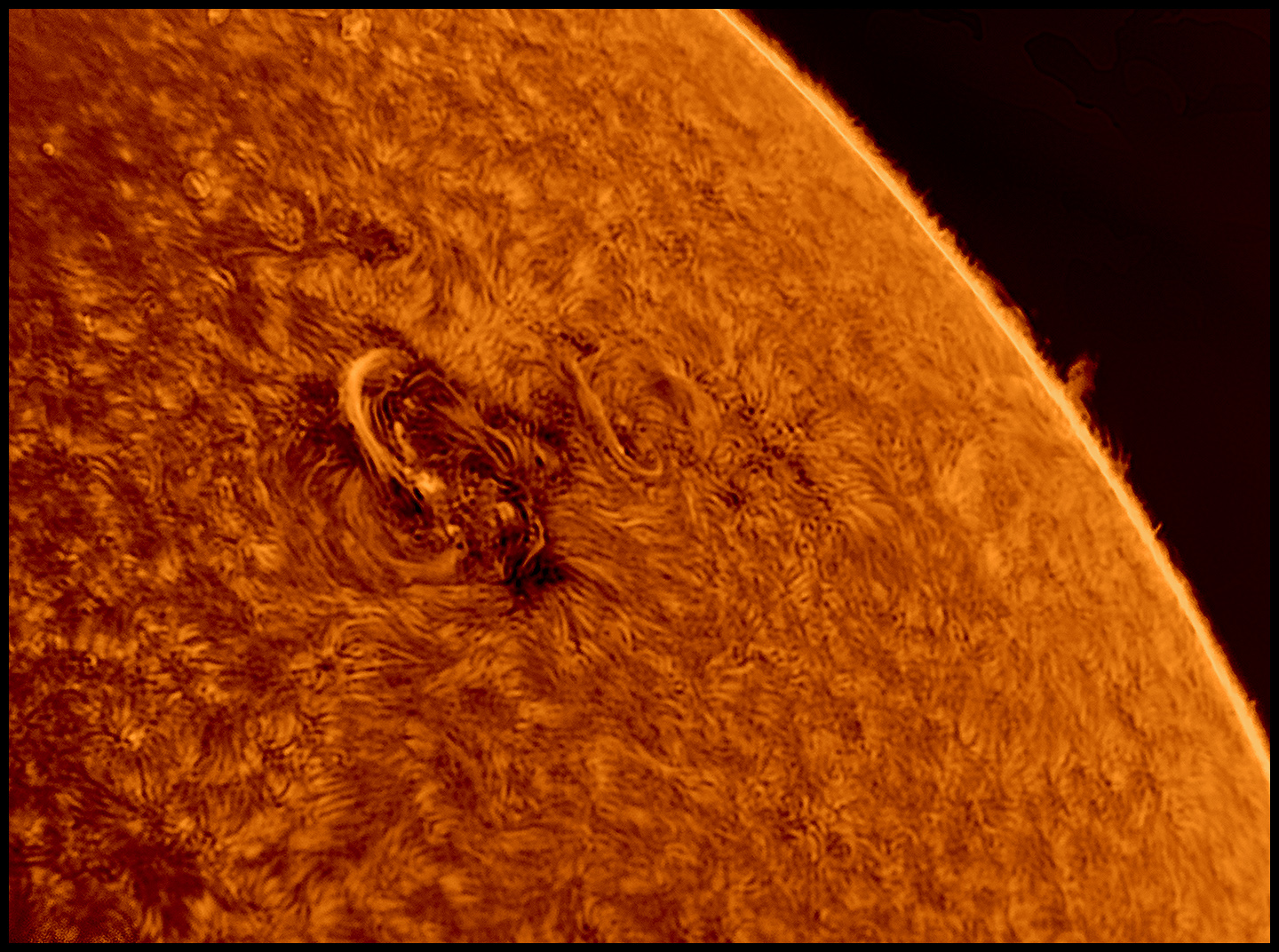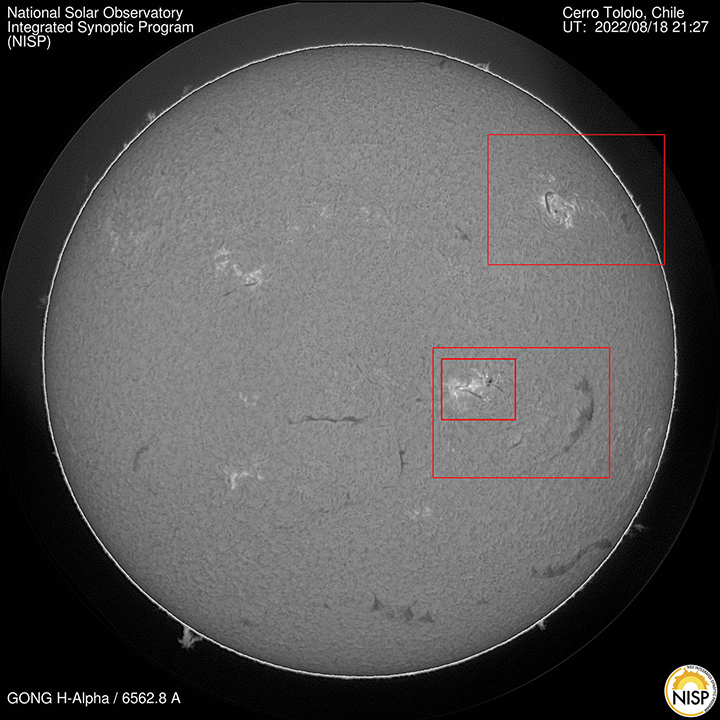Repairs (almost) complete!
8/18/2022. I sneaked a couple of captures in between the clouds this afternoon. Yeah, I'd say installing a fresh "blue glass" filter between the etalon and the trimming filter (and tweaking the tilt) was a complete fix. The first BG38 lasted 8-9 years, this one just two. It went from fine to a mess in only about six weeks. Moisture is the usual culprit (per CloudyNights), but I bet excess heat didn't help at all (I left the telescope on the A-P mount recently which obliged by keeping it aimed dead-on at the Sun for much of an afternoon). In the future, point away from the Sun or cover the objective (where IS that cover?) except when imaging, and let it (at least the filter bits) sleep indoors rather than under a cover outside. I've ordered more of those little blue filters (I have two spares left and four more are on the way; at $4 each, why not?).
I did a few things differently, too. More after show and tell:

Best 1,000 of 5,000
High gain (337), short exposures (532 µsec)
Sure, why not click it?
Seeing was horrible, improving to merely ghastly as the afternoon got on. Not that you could tell it. I increased gain and decreased exposure time to try to freeze what I could; I reduced the R.O.I. to get twice my usual frame rate, or about 90 fps. Knowing I was going to stack at least one shit-ton of frames licensed both adjustments -- that went well, as you see. I also experimented with the "clarity" and "dehaze" sliders in the Photoshop dialog for opening 16-bit images and thereby found some considerably improved tones. The BG38 glass is said to reduce the Ha pass by as much as 30%. If I were to use an IR blocking filter with a sharper cutoff longward of the Ha wavelength, could I then drop the exposure by a similar amount? Would there really be any advantage to that? The clip spans about a minute. I suspect that keeping that down closer to 30 seconds would be better since things on the Sun change and move quickly. It is, as ever, a balancing act, this time between noise and motion blur.
A less radical exposure of a wider area:

Best 500 of 3,000
gain 220, exp 1.2 ms
It's worth clicking.

750 of 2,000
Click it.
For perspective, here's the scale of things overlayed on a GONG show survey image of today's Sun from Chile.

Good is never good enough: try tuning the filter a bit. The upper left fifth of the full frames are relatively featureless, but reasonable ROIs are working fine.
My deep-sky photos are made with a variety of sensors and optics. Deepest images come now from a ZWO ASI1600MM Cooled Pro CMOS camera, an ASIair (model 1) and sometimes one of several laptops. A good many images come from an unmodded Canon 6D but a lot more will be coming from an R6. Video and video extracts begin in a Canon EOS M, usually running in crop mode via Magic Lantern firmware (but the 6D and especially the R6 will probably see more use). Telescopes include an AT10RC, an Orion 10" F4 Newtonian, and a pair of apochromats: a TMB92SS and a AT65EDQ. A very early Astro-Physics 5" F6 gets some use, too. So do lots of camera lenses on both the ASI1600 and on the Canons. A solar Frankenscope made using a 90mm F10 Orion achromat and the etalon, relay optics, and focuser from a Lunt 60 feeding a small ZWO camera will see more action as the Sun comes back to life (Autostakkart!3 is my current fav for image stacking). Mounts include an iOpton SkyTracker (original model), a bargain LXD-55, a Losmandy G11 (492 Digital Drive), and an Astro-Physics Mach1. PixInsight does most of the heavy lifting; Photoshop polishes. Some of the toys are more or less permanently based in New Mexico. I desperately hope to get back soon.
:: top ::